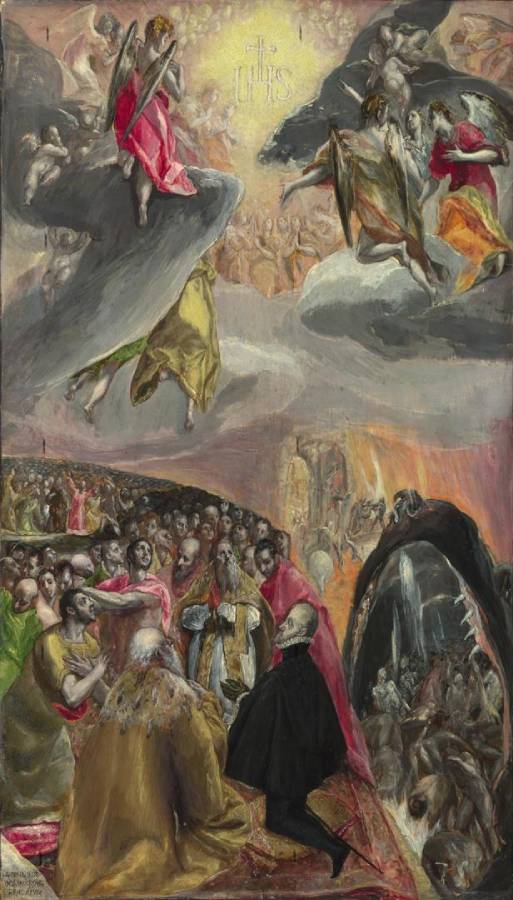El Greco (1541-1614)
Adoración del Nombre de Jesús (The Adoration of the Name of Jesus)
late 1570s
Oil and egg tempera on pine, 55.1 × 33.8 cm
National Gallery, London
This picture is closely related to a larger work of the same subject in the monastery of San Lorenzo in the Escorial, which El Greco probably painted for Philip II, King of Spain – one of the artist’s first commissions upon his arrival in Spain. It’s not clear whether our picture was painted in preparation for the Escorial one or if it was produced as an independent work, perhaps intended as a gift to Diego de Castila, El Greco’s friend, patron and dean of the cathedral in Toledo, where the artist had moved by 1577.
The picture celebrated the victory of the so-called Holy League – the Venetians, the Spanish Empire and papal states under Pius V – against the Turks at the naval battle of Lepanto, in south-western Greece, in 1571. The Holy League was established, as Philip II wrote to his minister on 12 April 1571, ‘to defend the holy name’ of Jesus. Indeed, the letters ‘IHS’ – an abbreviation of IHSOUS, the Greek spelling of ‘Jesus’ – in the sky are the painting’s main focus, and seem to glow with a celestial light. The name of Jesus was believed to have power over non-Christians and its veneration was promoted by Saint Paul.
In the foreground, kneeling on a carpet that seems to be floating in space, are the key figures in the battle against the Turkish forces. The man in a gold robe with his back to us is Doge Alvise I Mocenigo, the elected head of the Venetian state. To his right, dressed in black with a white ruff, is Philip II; opposite him is Pope Pius V. The figure with outstretched arms next to the Pope may be Don Juan of Austria, the fleet commander – in the Escorial painting his pose makes more sense as he leans on a sword.
To the right is a monstrous open mouth that looks like the opening to a dark cave. Pointed teeth hang down like stalactites. This is Leviathan, the mythical sea monster of the Old Testament, swallowing up the souls cursed to hell. The tiny figures inside are dark and shadowy, and there are skeletons among them.
In the space between the two groups is a bridge leading towards an archway. Souls pass through here to purgatory, where they will be cleansed of their sins and await their ascent to heaven. By including visions of hell, purgatory and heaven, El Greco turns the scene into an epic vision of humanity’s judgement and the promise of salvation.
The picture was designed to be portable, rather than hung on a wall – the reverse is painted to imitate wood grain – and it was probably used to aid private prayer. (NG)
See also:
• Felipe II, King of Spain (1527-1598) | Mocenigo, Alvise I (1507-1577)
